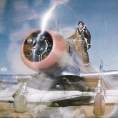Two Lessons From The DCA Crash
-
Members Online
- 47U
- Echo
- Ivan
- LANCECASPER
- PeteMc
- NINO57
- bluehighwayflyer
- eman1200
- BobbyH
- EricJ
- 1980Mooney
- Jason 1996 MSE
- TangoTango
- Guillaume
- RACACH
- Grumpy
- neilpilot
- Doug sytsma
- Bryan G
- Sabremech
- Shadrach
- Ragsf15e
- Gary Bymers
- PilotX
- Max Clark
- Jsno
- N177MC
- cruiserflyer
- NickG
- Parker_Woodruff
- The_Journey
- Ron McBride
- midlifeflyer
- toto
- SKI


Recommended Posts